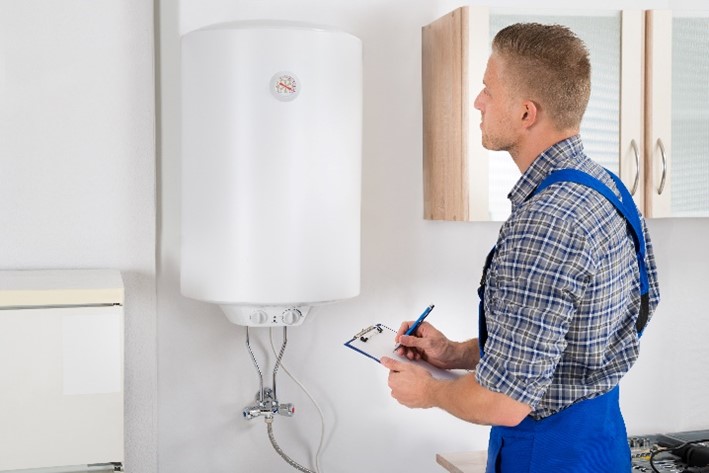Step-by-Step Guide to Maintaining Your Home's Hot Water System
Step-by-Step Guide to Maintaining Your Home's Hot Water System
Blog Article
Were you hunting for facts and techniques concerning Water Heater Maintenance Tips You Can't Afford to Forget?

Warm water is essential for everyday convenience, whether it's for a refreshing shower or washing meals. To guarantee your hot water system runs effectively and lasts much longer, regular maintenance is vital. This write-up supplies practical suggestions and understandings on how to preserve your home's hot water system to stay clear of disruptions and expensive fixings.
Introduction
Preserving your home's warm water system could seem daunting, however with a couple of straightforward steps, you can ensure it runs efficiently for several years to come. This guide covers whatever from recognizing your hot water system to DIY maintenance pointers and knowing when to contact specialist aid.
Importance of Preserving Your Hot Water System
Routine maintenance not only extends the life expectancy of your warm water system yet additionally guarantees it runs effectively. Ignoring upkeep can bring about lowered efficiency, higher energy bills, and even premature failure of the system.
Indications Your Hot Water System Requirements Upkeep
Understanding when your warm water system requires focus can prevent major issues. Look out for signs such as inconsistent water temperature level, weird sounds from the heating system, or rusty water.
Flushing the Hot Water Heater
Purging your water heater removes debris buildup, enhancing performance and prolonging its life.
Checking and Replacing Anode Rods
Anode poles prevent corrosion inside the tank. Inspecting and changing them when broken is critical.
Facility Concerns Requiring Professional Aid
Instances consist of significant leakages, electric problems, or if your hot water heater is regularly underperforming.
Routine Expert Maintenance Conveniences
Specialist upkeep can include comprehensive evaluations, tune-ups, and ensuring conformity with security requirements.
Examining and Adjusting Temperature Level Settings
Changing the temperature settings makes certain optimal efficiency and security.
DIY Tips for Upkeep
You can do several upkeep jobs yourself to keep your warm water system in top problem.
Checking for Leakages
Consistently examine pipes and links for leaks, as these can lead to water damages and higher expenses.
Understanding Your Warm Water System
Before diving into maintenance jobs, it's practical to understand the standard components of your warm water system. Normally, this includes the hot water heater itself, pipes, anode poles, and temperature level controls.
Regular Monthly Upkeep Tasks
Routine monthly checks can assist capture minor concerns before they intensify.
Testing Pressure Alleviation Valves
Checking the stress relief valve guarantees it functions properly and protects against excessive stress buildup.
Shielding Pipes
Protecting warm water pipelines decreases warmth loss and can save power.
When to Call a Professional
While DIY upkeep is beneficial, some problems call for specialist knowledge.
Conclusion
Routine upkeep of your home's warm water system is important for effectiveness, long life, and price savings. By adhering to these tips and knowing when to seek expert aid, you can ensure a reputable supply of warm water without unexpected disruptions.
How to Maintain an Instant Hot Water Heater
Before tinkering with your hot water heater, make sure that it’s not powered on. You also have to turn off the main circuit breaker and shut off the main gas line to prevent accidents. Also turn off the water valves connected to your unit to prevent water from flowing into and out of the appliance. 2. When you’re done, you have to detach the purge valves’ caps. These look like the letter “T†and are situated on either side of the water valves. Doing so will release any pressure that has accumulated inside the valves while at the same time avoid hot water from shooting out and burning your skin. 3. When the purge valves’ caps are removed, you have to connect your hosing lines to the valves. Your unit should have come with three hoses but if it didn’t, you can purchase these things from any hardware or home repair shops. You can also get them from retail stores that sell water heating systems. Read the user’s manual and follow it to complete this task properly. When the hosing lines are connected, open the purge port’s valves. 4. You should never use harsh chemical cleaners or solutions when cleaning your unit. Make use of white vinegar instead. It should be undiluted and you’ll probably use about 2 gallons. 5. Now flush your water heater. This task should probably take about 40 minutes. We can’t give you specific directions for this because the procedure is carried out depending on the type, model and brand of your heater. With that being said, refer to the user’s manual. 6. When you’re done draining the unit, you have to turn off the purge port valves again. Remove the hosing lines that you earlier installed on each of the water valves. Put the valve caps (purge port) back in their respective places and be very careful so as not to damage the rubber discs that are found inside these caps. 7. Now that everything’s back in place, check your user’s manual again to find out how to reactivate your water heating system. 8. Once it is working, turn one of your hot water faucets on just to let air pass through the heater’s water supply pipes. Leave the tap on until water flows smoothly out of it. https://www.orrplumbing.com/blog/2014/september/how-to-maintain-an-instant-hot-water-heater/

We had been brought to that editorial about Tips For Maintaining Your Hot Water Heater through an acquaintance on our other blog. Liked our piece? Please share it. Let someone else locate it. Bless you for being here. Return soon.
Book Inspection Report this page